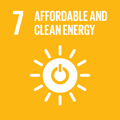- Docente: Marco Garavelli
- Credits: 6
- SSD: CHIM/02
- Language: Italian
- Teaching Mode: Traditional lectures
- Campus: Bologna
- Corso: Second cycle degree programme (LM) in Industrial Chemistry (cod. 6066)
-
from Feb 24, 2025 to May 30, 2025
Learning outcomes
At the end of the course the student will be familiar with, and will be able to apply, theoretical qualitative and quantitative (i.e., computational) approaches to the study and prediction of the molecular reactivity, including excited states, their properties and photoiduced chemical reactions involving complex photoactive molecular architectures. The student will be able to understand and rationalize the properties of the different molecular materials, namely photoactive systems, including interactions with, and effects of, the environment. The student will know current and potential applications of these materials (e.g., in organic electronics, solar cells, sensors, photonics, etc). The student will gain molecular modelling skills, including HPC based simulations of thermo and photo processes, and will know the basis for the in-silico design of new smart materials, with a specific focus into photoresponsive molecular systems.
Course contents
Required skills: A basic knowledge of quantum chemistry, spectroscopy and photochemistry is required.
Content: The rational is provided for the use and the application of theoretical models (such as PMO, VB-Configuration Mixing, Correlation Diagrams, etc) to the understanding, modeling and prediction of chemical reactivity in (Photo)chemistry. The fundamental quantitive theoretical tools of Computational (Photo)Chemistry, spanning post-HF quantum mechanical methods (such as MC-SCF and MR-PT2 approaches) and potential energy surface mapping algorithms (such as the Newton-Raphson and IRC methods), are also illustrated during classes and applied during the laboratory exercises, to solve actual problems of structure and reactivity in Photochemistry, Photobiology and Material Chemistry.
Readings/Bibliography
Mechanism and Theory in Organic Chemistry Lowry, T. H.; Richardson K. S.
Advanced Organic Chemistry Sundberg, R. J. ;F. A. Carey
Scientific papers and other specifically prepared material.
Teaching methods
Lessons in the classroom (4 CFU) for the theory, and computational exercises (2 CFU) in the computational laboratory.
As concerns the teaching methods of this course unit, all students must attend Module 1, 2 [https://www.unibo.it/en/services-and-opportunities/health-and-assistance/health-and-safety/online-course-on-health-and-safety-in-study-and-internship-areas] on Health and Safety online”.
Assessment methods
Single written exam at the end of the course, with theoretical questions and simple problems to solve (each one corresponding to a specific maximum score, for a total of 33 points equivalent to a final mark of 30 with Lode). The exam is passed with a minimum score of 18/30.
Lab reports will be required.
Teaching tools
Slides show with digital equipments in the classroom.
Workstations and software packages are used in the Computational Lab to explore and study reaction mechanisms in (Photo)Chemistry.
Office hours
See the website of Marco Garavelli
SDGs


This teaching activity contributes to the achievement of the Sustainable Development Goals of the UN 2030 Agenda.
